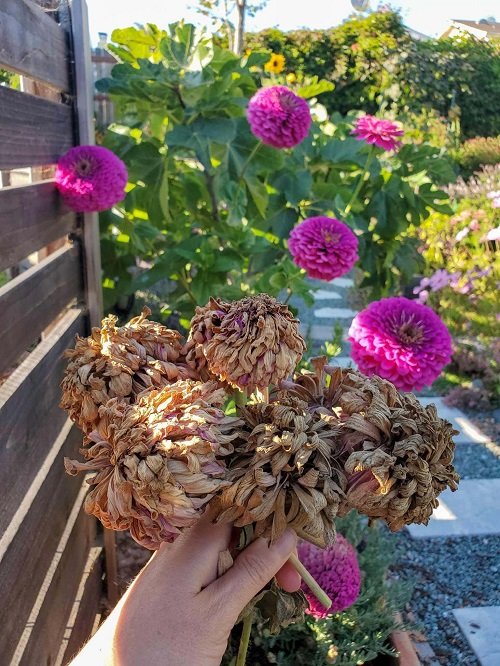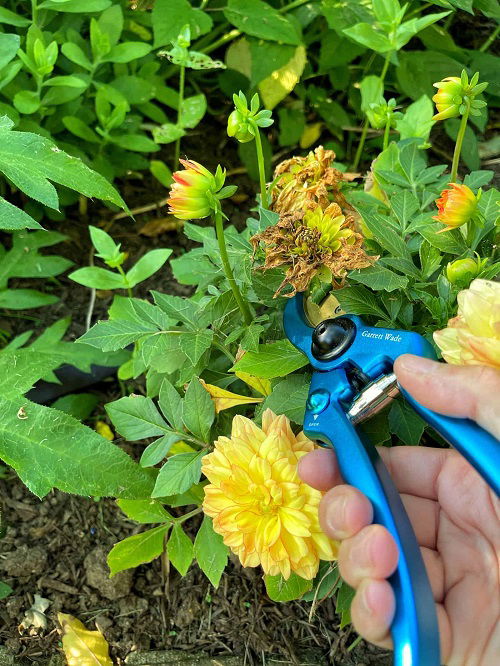We’ve got all the tips and tricks you need on How to Make Zinnias Bushier and Flowerful! Don’t miss out on the last tip!
Zinnias are easy to care for and bloom fine, but if you want one that’s dense and shines from afar, you’ll need some pro tips and we are here with them all!.
How to Make Zinnias Bushier and Flowerful
1. Give Them Plenty of Sun
Zinnias loves bright, direct sunlight. Period! So, for better growth and flowers, keep them in the sun for a long time. They would do best if you kept them for 6-8 hours in direct sunlight.
2. Prune, But Selectively!
Now, what does it mean to prune Zinnias selectively? Well, we’re going for a bushy appearance, right? So, stay away from getting rid of the excess growth.
Pick out the dead and yellowing branches that are growing in odd directions or seem weak. It will result in a bushier Zinnia, trust us!
3. Get Rid of the Initial Buds
If you remove the first few flower buds that appear on your Zinnia, it will focus more energy on producing new ones. Why?
Well, the plant, in its infancy, requires more energy to stem, and snipping away the initial batch of buds will help the plant to save the needed energy that it will then use to stem out, which will carry more future buds, rather than wasting the energy into flowering a few initial buds.
We know it seems fishy, but believe us, it will lead to a bushier and prettier Zinnia that’s full of flowers.
4. Pick a Bloom Boosting Fertilizer
Ditch the normal fertilizers that are “specially formulated” for Zinnias. They’re glorified and not good enough. All you need is a bloom-boosting fertilizer like these, and your Zinnia will start producing more flowers after just one or two sprays. You can also go for:
- Bone Meal: Bone meal is a great option that acts as a natural fertilizer because it’s high in phosphorus. Phosphorus helps plants in fruiting and flowering, so your Zinnia will give you plenty of flowers. Here’s how to use bone meal.
- Compost Tea: Compost tea is rich in nutrients, beneficial microbes, and organic matter, so it can provide a balanced and much-needed boost for Zinnias. Purchase some compost tea-rich fertilizer, or you can make your own. Just mix some compost with water and let it sit for a bit. In a few days, you can use it to water your plants.
- Manure Tea: What makes manure tea great is its nitrogen, phosphorus, and potassium content that promotes plant growth and flowering.
5. Give Them Just Enough Water
Don’t overdo the watering. Just don’t!
Zinnias don’t need a lot of water, but don’t do well in drought, either. So, go for a balanced approach. Water deeply, and then let them dry up a bit before watering them again. Make it a habit to check the topsoil for dryness before watering the plant again.
The ideal soil moisture level for Zinnias is one that maintains consistent moisture without allowing the soil to become waterlogged.
6. Space the Zinnias Out!
If you’re growing these in pots, space them 6-8 inches apart, but if you’re growing them in a raised bed or a flower bed, space them 6-10 inches. A foot is even better for bigger Zinnia varieties.
Why the space? Tight spots stress the plant and prevents it from growing to its full potential.
The NO 1 Trick to Make Zinnias Bushier and Flowerful
There’s no one-size-fits-all thing when it comes to flowers, but there is one trick that can help you get bushier and more flowerful Zinnias. Well, it’s a combination of two tricks!
The first is multiple pinching. If you pinch the main stem tip, you’re basically forcing the plant to grow extra branches from the side, and you’ll have a denser, bushier Zinnia. More branches equals more flowers!
The other one is deadheading. Hand in hand with pinching! You can make the new flowers appear more because deadheading will help the plant focus on sustained growth and encourage it to produce more flowers.








